A Template for Excellent Salads
Last week, a member of my cooking + nutrition group program shared a magazine article that explains a theory for making the perfect salad. The article states the best salads have six elements: sweet, sour, crunchy, dry, soft, and wet. I loved reading about how someone else thinks about salads. Ironically, I have a similar theory, and believe in it so much that I wrote a blog post about it a few years back.
This article, and the program participant's interest in it, helped me realize others (and maybe you?!) also appreciate the art of salad making. An art that I believe, when guided by a template, is a resourceful, dynamic, and satisfying approach to salad assembly that all of us can adopt. As I've applied this template to my own cooking over time, it's transformed how I think about combining ingredients in every meal I make, not just salads.
So I was inspired to dig up my old blog post and update it with a clearer description of the three elements I think make a good salad. Plus (!), I've created just for you a PDF template for making excellent salads every day. This guide is free to download and comes in a convenient one-page format, easy to print and stick on your fridge or inside your pantry door for quick reference anytime.
Click here to download!
And if you're intrigued by what makes an excellent salad, keep reading for my three essential elements.
What makes an excellent salad?
Quality ingredients
Salads are transparent; nothing can hide among fresh greens the way things can in a tomato sauce or beneath a layer of cheese. Salads are only as good as their individual components. With minimal and predominately raw ingredients, make sure each component is the freshest possible.
Contrast
Arguably the most important element as it applies to any meal, contrasting flavors and textures in a salad produces a sum that's much greater than its parts. Using this technique satisfies our sweet and salty, crunchy and creamy cravings all in one dish. Ayurveda suggests that balancing the six tastes in a meal supports balance in our body and diminishes cravings. I believe the same goes for balancing textures. And I guide you to do both in the free, downloadable template.
A Bright Dressing
Salads, like many dishes, need a brightener. And a sharp (e.g. bright/acidic) dressing is usually the answer. Common ingredients that create a bright dressing: vinegar, citrus, mustard, and ginger.
A good salad dressing should have balanced sweet, salty, and acidic notes. But it should taste brighter (or more acidic) and saltier than you'd like it to be once mixed with the salad. General rule of thumb for ensuring this: use equal parts acid-to-oil. This also guarantees the salad is not overly oily and flavorless. And remember, a grain or lentil-based salad absorbs more liquid than greens, and therefore requires a greater quantity of dressing for the bright flavor to come through.
Another element of a good dressing is its creamy factor. Even oil-based dressings can be creamy with the addition of a spoonful of mustard, tahini, yogurt, or mayo. Also, a spoonful of nutritional yeast gives a fabulous cheese-like flavor and richness.
Looking for dressing inspiration? Try out one of these:




